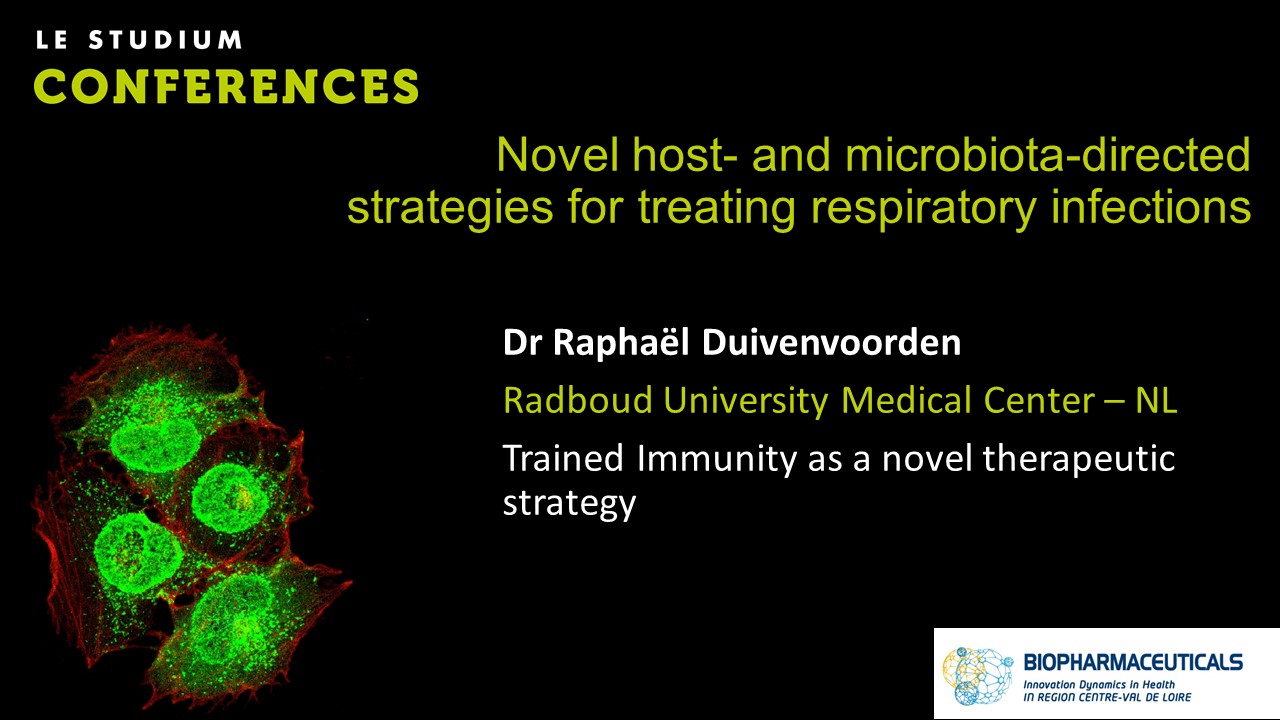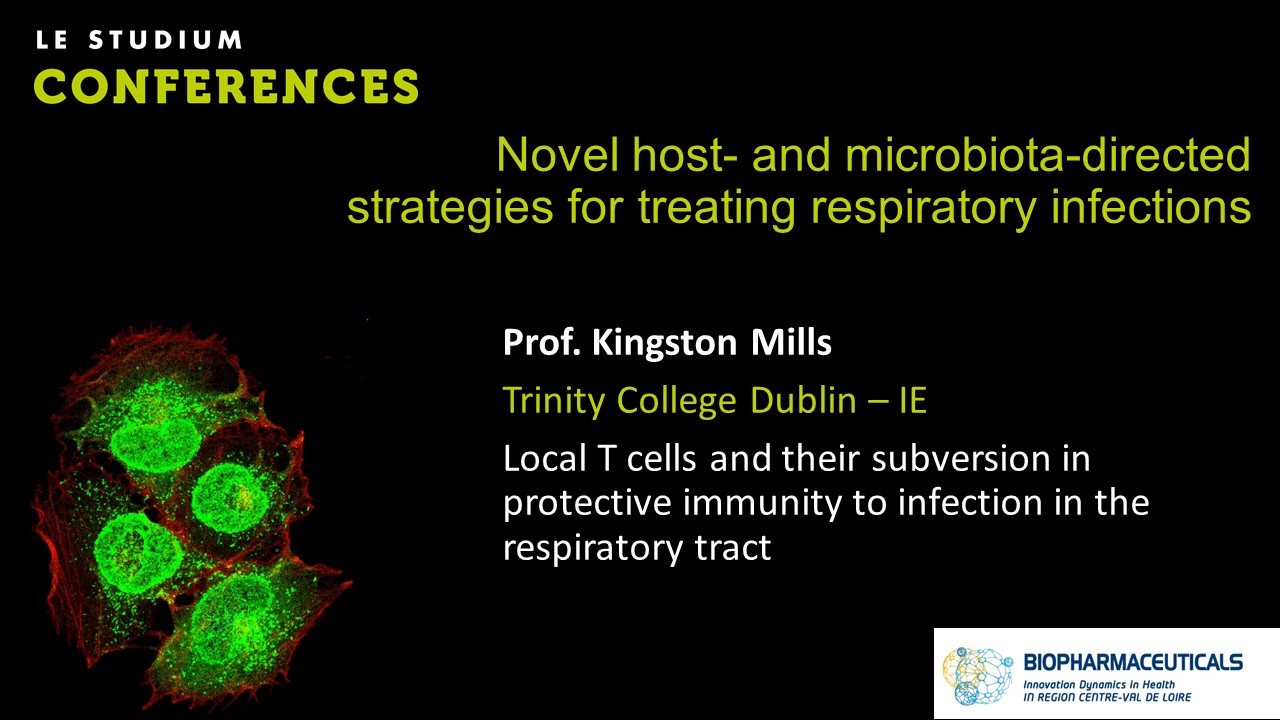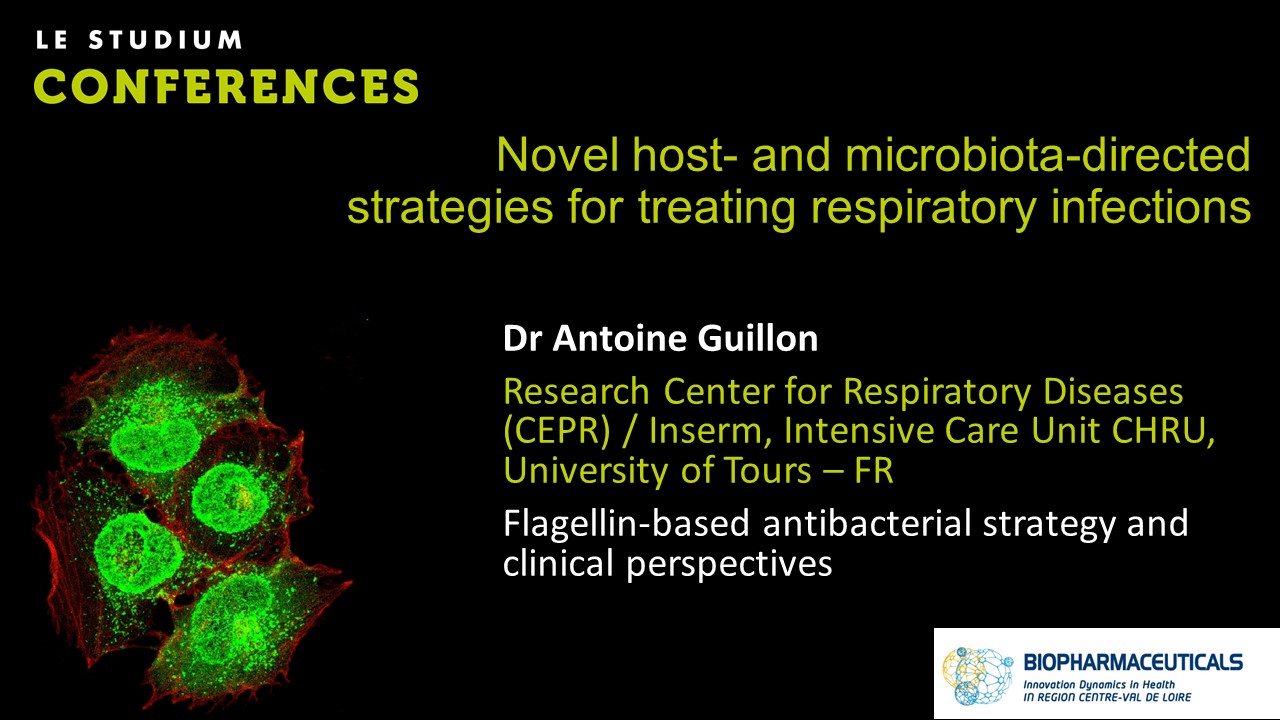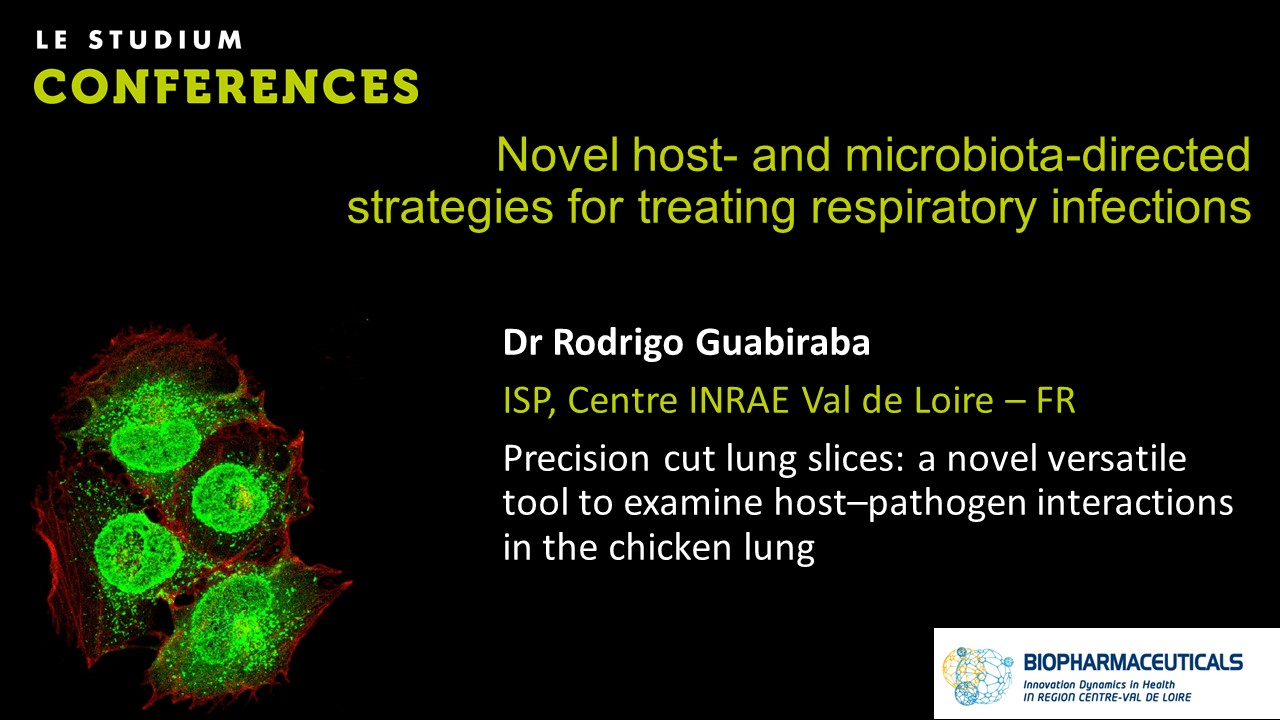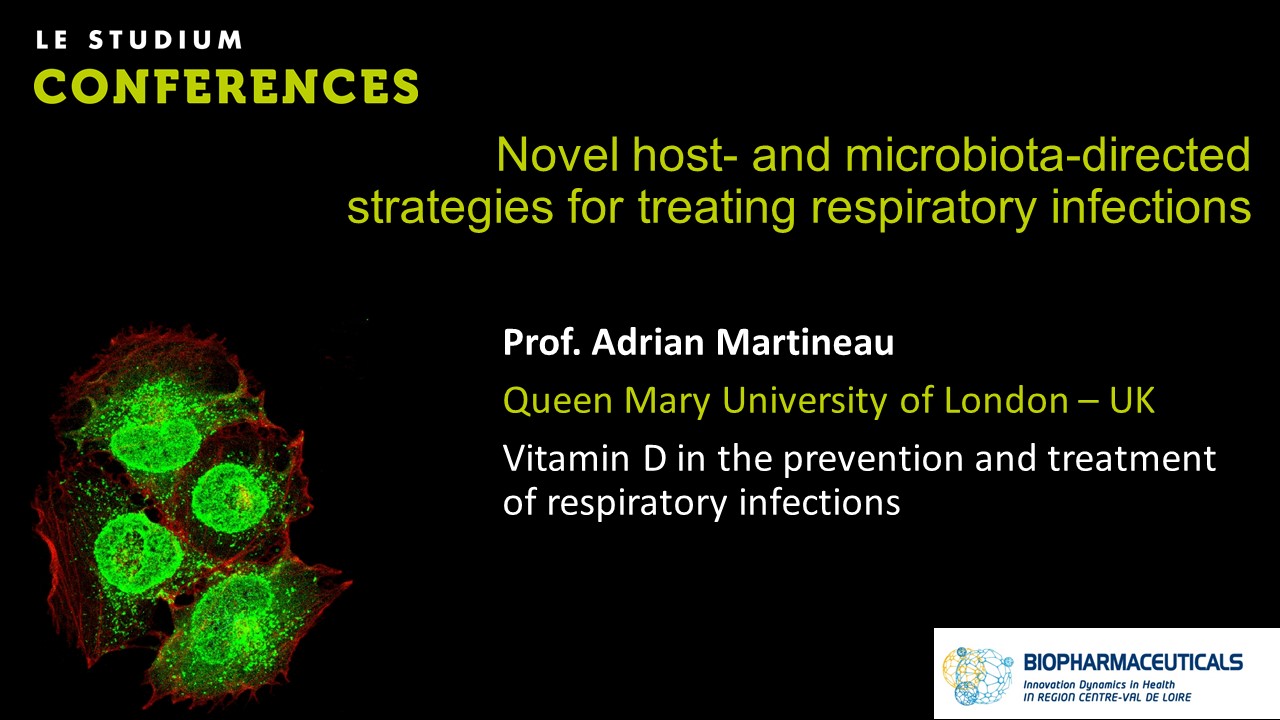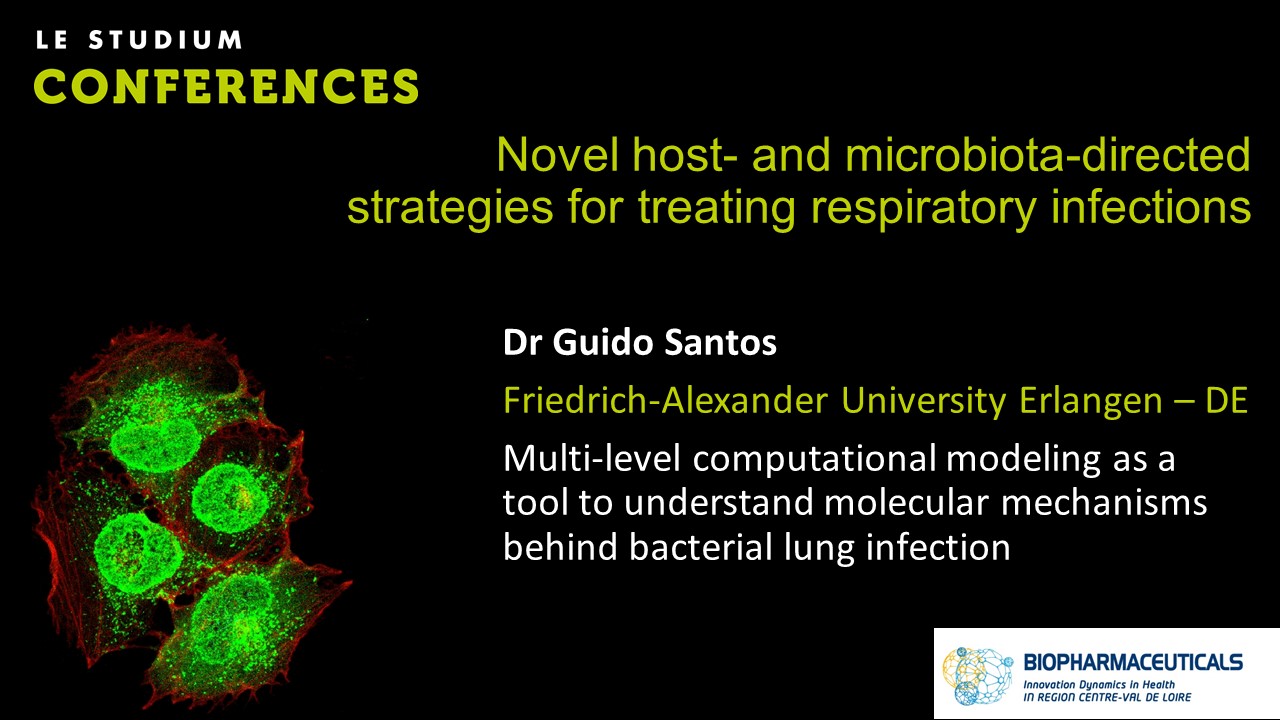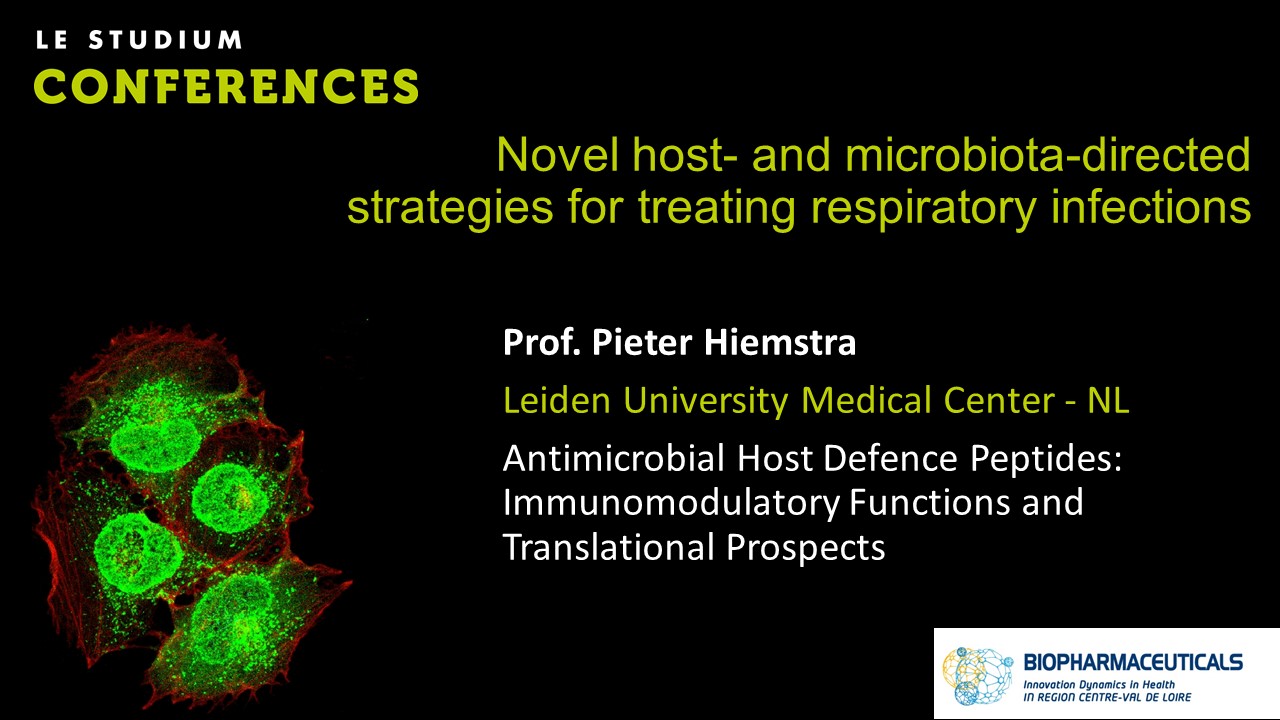Notice
Prof. Mike Surette - The Good and the Bad of Commensal-Pathogen Interactions in the Airways
- document 1 document 2 document 3
- niveau 1 niveau 2 niveau 3
Descriptif
The airways arecolonized by a complex microbiota that varies in composition and density spatiallythroughout the respiratory tract, as well as temporally through the life-course. While the lower respiratory tract hastraditionally been considered sterile in healthy individuals, it is now clearthat the lower airways are continuously seeded with microbiota from oral andupper respiratory tract. This may represent a transient community that iscleared and reseeded in healthy individuals; however, it is clear that inchronic airway disease, members of this commensal microbiota thrive in thelower airways. Here they are often inthe presence of the pathogens traditionally associated with chronic lunginfections. These may simply representopportunistic colonizers with little contribution to disease, or they maycontribute to disease as part of polymicrobial infections, or more directly aspathogens themselves. The pathogenicpotential of many commensal microbiota is under appreciated. Conversely, the commensal microbiota plays anintegral role in colonization resistance, and the ability of commensalmicrobiota to inhibit the growth of common pathogens is widespread. The dichotomy in ‘good vs bad’ behaviour ofcommensal microbiota is often a ‘strain’ rather than species specificproperty. While the complexity of thesecommensal-pathogen Interactions pose a challenge in standard diagnostic andmicrobiome profiling approaches to respiratory disease, they do represent opportunitiesfor novel interventions in managing chronic airway disease and reducingsusceptibility to respiratory infections in vulnerable populations.
Dans la même collection
-
Dr Raphaël Duivenvoorden - Trained Immunity as a novel therapeutic strategy
Innate immune cells form a vital first line of defense against pathogens, and their activation upon recognition of pathogens is rapid and non-specific. For a long time it has been assumed that
-
Prof. Kingston Mills - Local T cells and their subversion in protective immunity to infection in th…
Respiratory infection with Bordetella pertussis causes whooping cough. The infection is controlled by innate immune responses, but complete bacterial clearance from the respiratory tract and
-
Dr Aurélie Crabbé - Host metabolites modulate bacterial susceptibility to antibiotics
Antibiotic susceptibility of bacterial pathogens is typically evaluated using in vitro assays that do not consider the complex host microenvironment. This may help explaining a significant
-
Dr Antoine Guillon - Flagellin-based antibacterial strategy and clinical perspectives
Bacterial pneumonia is a leading cause of morbidity and mortality worldwide. Antibiotics constitute the standard of care but are faced with the emergence of antimicrobial resistance and the curative
-
Dr Rodrigo Guabiraba - Precision cut lung slices: a novel versatile tool to examine host–pathogen i…
The avian respiratory tract is a common entry route for many pathogens and an important delivery route for vaccination in the poultry industry. Immune responses in the avian lung have mostly been
-
Dr Mustapha Si-Tahar - Towards a metabolic anti-influenza therapy
Influenza A virus (IAV) is the etiological agent of a contagious acute respiratory disease, which is associated with high morbidity and mortality. This virus also causes a considerable socio
-
Prof. Adrian Martineau - Vitamin D in the prevention and treatment of respiratory infections
Vitamin D is best known for its effects on calcium homeostasis, but a growing body of evidence shows that it also has extensive immunomodulatory actions. In this talk I will describe the effects of
-
Dr Guido Santos - Multi-level computational modeling as a tool to understand molecular mechanisms b…
Pneumonia is one of the most prevalent infectious diseases worldwide, whose main cause is the pathogen Streptococcus pneumoniae. This is an opportunistic disease affecting the most to sensitive
-
Prof. Pieter Hiemstra - Antimicrobial Host Defence Peptides: Immunomodulatory Functions and Transla…
Antimicrobial host defence peptides (AMPs) are effector molecules of the immune system. AMPs are considered as possible alternatives to conventional antibiotics for the treatment of respiratory

